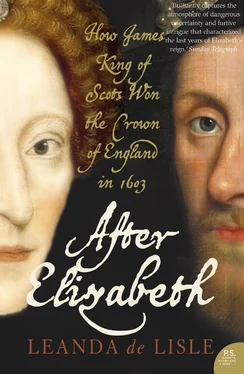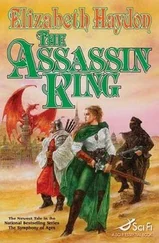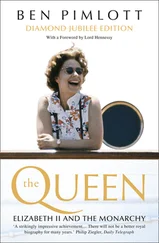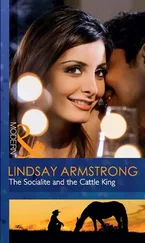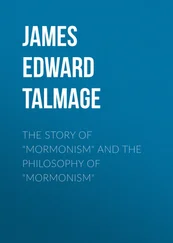‘I was married to this kingdom, whereof always I carry this ring for a pledge’, she informed Maitland, pointing to her coronation ring, ‘and howsoever things go I shall be queen of England so long as I live, when I am dead let them succeed who have the best right.’ 25 Maitland had stayed at court hoping to change Elizabeth’s mind, but in the days that followed she had only expanded on her motives for refusing to name an heir. ‘I know the inconstancy of the people,’ she told Maitland, ‘how they loathe always the present government; and have their eyes continually set upon the next successor; and naturally there are more that look, as it is said, to the rising than to the setting sun.’ She recalled how malcontents had looked to her when Mary I was on the throne and concluded such men might now feel differently towards her. A prince, she warned, could not even trust ‘the children who are to succeed them’. 26 She would certainly not trust those of Catherine Grey or Mary, Queen of Scots.
On 21 September 1561, Catherine gave birth in the Tower to a son, Edward, Lord Beauchamp, heir to the throne under the will of Henry VIII and under English law. Elizabeth was, however, already working towards the destruction of his claim. Catherine and Hertford were closely questioned about their marriage. It emerged that the only witness to the ceremony and the only person who knew the name of the priest, had subsequently died. There was, therefore, only the couple’s word that they had been married and that was hardly likely to be enough. Their son was declared illegitimate by a church commission later that autumn. *
Over the next four decades Elizabeth’s own former illegitimacy kept alive the hope that Beauchamp’s might also be reversed, and William Cecil would remain an advocate of Beauchamp’s claim until his death. But Elizabeth’s actions had undoubtedly damaged the Suffolk cause and its immediate effect was to strengthen that of Mary, Queen of Scots. Elizabeth’s brush with smallpox in 1562 reminded the Protestant elite that their wealth and power were entirely dependent on her life and the Commons once again drew up a petition begging Elizabeth to marry. It drew attention to the dangers of civil war and foreign invasion if England were to be disputed among rival claimants of different religions after her death; France – where Huguenots and Catholics were fighting a savage civil war – illustrated just how grim that fate would be. Elizabeth assured them that there was time for her to marry, but in 1565, it was the Queen of Scots who made a dynastic marriage and with the English crown in mind.
Mary Stuart’s husband, the twenty-year-old Henry Darnley, was descended from Margaret Tudor through her second marriage to Archibald Douglas, Earl of Angus. He was, therefore, second only to Mary herself in the line of succession. His English birth was a significant bonus as it went some way to answering objections about Mary’s foreign birth. Harington used it to counter fears that James VI would give official posts and royal land to Scots, arguing: ‘It is without all question that he which is … by both his parents descended of English blood will in England become English and a favourer chiefly of Englishmen’ – a popular argument amongst James’s supporters. Whatever the dynastic advantages of the marriage, however, it would prove fatal for Mary. Darnley was a handsome youth: six foot one, fair-haired, ‘beardless and lady faced’, but he was also insufferably arrogant and the strain of playing second fiddle to his wife soon proved too much for him. He began to drink heavily and conducted several affairs. Mary, anxious not to give him any real power, refused to grant him the crown matrimonial and instead invested her trust in her personal secretary, the Italian musician David Riccio.
In March 1566, when Mary was six months pregnant, the jealous Darnley and a group of nobles came for her secretary. They walked into the tiny room off the Queen’s bedchamber where she was having supper with the Countess of Argyll and Riccio, demanding he leave the room. The terrified man grabbed Mary’s skirts, but with a pistol pointing at Mary’s pregnant belly, he was dragged away screaming to be stabbed to death. James had survived the trauma to his mother to be born at Edinburgh Castle on 19 June 1566, between nine and ten in the morning. A caul was stretched over James’s face in what has traditionally been seen as a sign of good fortune. The first sign of it came later that morning when his father recognised his legitimacy with the seal of a kiss, but a rapid series of events had followed that endangered his life and then that of his mother.
When James was nine months old Darnley’s house was destroyed by gunpowder and his body was found strangled in grounds nearby. Three months later Mary married his suspected murderer, the Earl of Bothwell. The scandal triggered a revolt led by her Protestant Lords, including Bothwell’s former ally in the murder of Darnley, James Douglas, Earl of Morton. It ended with her thirteen-month-old son put on her throne in her place, to be raised a Protestant. Mary fled to England in May 1568. Elizabeth had warned that a prince could not even trust the children who were to succeed them, but she could hardly rejoice at being proved right. Catherine Grey had died only four months earlier. Her younger sister, known as ‘crookback Mary’, was in custody after secretly marrying Thomas Keyes, the Sergeant Porter. * But Elizabeth was now confronted with a far greater threat than that posed by the Grey sisters, for here was a queen regnant and no mere subject.
William Cecil dissuaded Elizabeth from helping Mary regain her throne and since Elizabeth could not risk allowing Mary to leave for Europe, where she might have raised support for an invasion force, she was left with no choice but to keep her cousin imprisoned in a succession of great houses in the English Midlands. There she became a focus for Catholic discontent fuelled by envy of Cecil’s power and influence. Mary was barely south of the border before the great Catholic families of the north, the Earls of Northumberland and Westmorland, backed the Duke of Norfolk’s secret bid to marry her and return with her to Scotland. Elizabeth discovered the plan and the earls, fearing execution, led the north in rebellion in November 1569. It was crushed with great savagery and in its wake a still greater disaster fell on English Catholics. Pope Pius V issued a bull excommunicating Elizabeth and releasing her subjects from their obedience to her. *
A divide that had existed since the Reformation began widening once more. The Pope’s bull allowed William Cecil – Lord Burghley from 1571 – to paint Catholics as traitors by virtue of their faith. New laws were immediately introduced to prevent Catholics entering Parliament and they began to be ousted from local power in towns and counties. This appeared to be justified when, late in 1571, Mary and Norfolk were discovered to be involved in a plot to depose Elizabeth with the possible backing of a Spanish invasion. Norfolk was executed for his role and Elizabeth was put under pressure from her Councillors to behead Mary as well. She refused to set a precedent of regicide but the Protestant elite was soon fearful that the Catholic threat was growing ever greater.
In 1574, a new breed of secular priest (the equivalent of today’s diocesan priests) arrived in England as missionaries from the continent. Protestant hopes that Catholicism would die out were dashed and the reaction was ferocious, with the first of many priests to be executed dying in 1577. In June 1580 the Jesuits arrived in England spearheaded by Robert Persons and Edmund Campion. The pair would convert such important figures as the Queen’s champion Robert Dymoke and set up a printing press to disseminate Catholic literature and propaganda. Professional priest hunters were quickly put on their trail and in 1581 Persons was forced to flee back to the continent. Campion, however, was caught. ‘In condemning us,’ he told his judges, ‘you condemn all your ancestors, all the ancient priests, bishops and kings, and all that was once the glory of England.’ He was hung, cut down while still alive, drawn of his bowels, castrated and quartered.
Читать дальше
